Follow us on Telegram for the latest updates: https://t.me/mothershipsg
If you don't already know, Pasir Ris Park is a treasure trove for wildlife.
To further prove this point, two Pasir Ris residents, Jayaprakash Bojan and Dan Ng produced a stunning video that was released online last December.
The 11-minute video is a visual treat for anyone who watched it.
Over 40 species of wild animals featured in video
Filmed and edited by Jayaprakash and Ng, the video features over 40 species of local wildlife from Pasir Ris Park.
Most of the video was captured in Pasir Ris Park, with the exception of two scenes featuring Buffy Fish Owls which were captured in Hampstead Wetlands Park.
Jayaprakash shared with Mothership that the video was created to celebrate the wildlife and beauty of the park.
The scenes in the video captured a variety of natural behaviours exhibited by wildlife, from owls cuddling with one another, to yawning snakes.
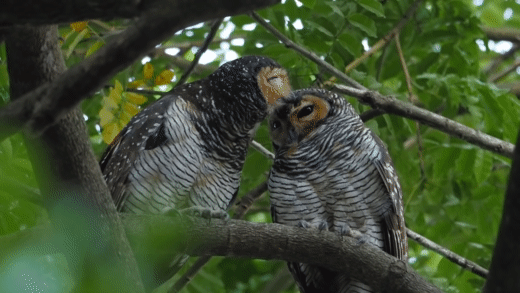 This super sweet Spotted Wood Owl couple. Footage via JD Wild Productions/Facebook.
This super sweet Spotted Wood Owl couple. Footage via JD Wild Productions/Facebook.
Here are other notable creatures that you might have missed at Pasir Ris Park when you visited previously:
Heron in the night
The opening scene of any video is crucial, and this video's first scene was simply enthralling.
The captivating scene featured a heron's silhouette in front of the moon:
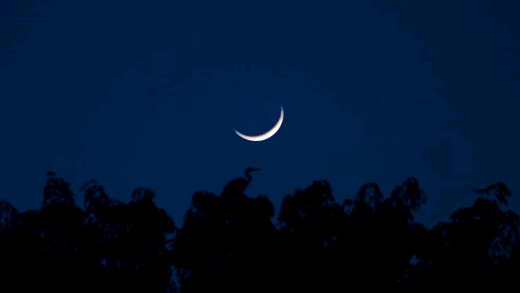 This opening scene of a heron's silhouette in front of the moon. Footage via JD Wild Productions/Facebook.
This opening scene of a heron's silhouette in front of the moon. Footage via JD Wild Productions/Facebook.
Less known to most, Pasir Ris Park is a nesting site for the Grey Herons, which are found in large numbers at certain parts of the park.
According to the National Parks Board, the large-sized bird has a grey upperside and a mostly white head with black markings down its long neck.
This species hunts along the water's edge and the solitary predator adopt a stalk-and-stab technique to catch their diet of fish and crustaceans.
Cute sleepy animals
Not every day you see a sleepy animal, or a wild animal yawning:
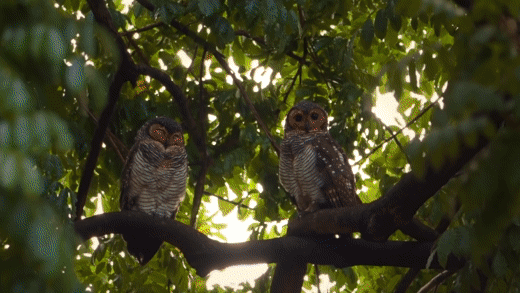 Some sleepy animals and yawns. Footage via JD Wild Productions/Facebook.
Some sleepy animals and yawns. Footage via JD Wild Productions/Facebook.
The above snippet from the video captured three species:
- Spotted Wood Owls: These nocturnal birds feed on rodents, large insects and small birds.
- Collared Kingfisher: Commonly spotted along canals and rivers, these small-sized birds dive into the water for fish.
- Oriental Whip Snake: A mildly venomous snake, this species hunts for geckos and small rodents.
Two male koels squabbling
The bird we hear every morning, the Asian Koel, is also featured in the video.
These birds are more often heard than seen and these two don't seem to be pals:
 Two male uuwwuu birds (Asian Koels) that don't seem to be pals. Footage via JD Wild Productions/Facebook.
Two male uuwwuu birds (Asian Koels) that don't seem to be pals. Footage via JD Wild Productions/Facebook.
The Asian Koels do not build their own nests, and instead, lay eggs in the nests of crows.
Thus, they keep the crow population in check.
Mating horseshoe crabs
Some scenes in the video by Ng and Jayaprakash also feature some rare species.
Here's one such species:
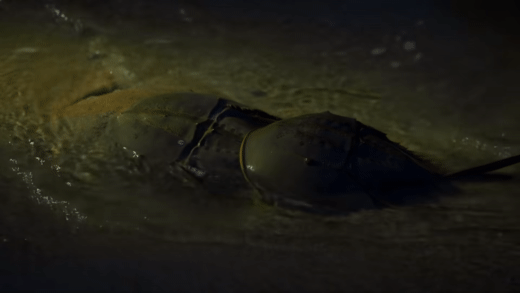 Horseshoe crabs having fun under the veil of darkness. Footage via JD Wild Productions/Facebook.
Horseshoe crabs having fun under the veil of darkness. Footage via JD Wild Productions/Facebook.
While this scene of two mating horseshoe crabs might not seem like much, it is a hopeful scene as Coastal Horseshoe Crabs are listed as 'Endangered' on the Red List of threatened animals of Singapore, according to Wild Singapore, an online website on local wildlife.
Even though their name might make you think they are crabs, they are actually more closely related to scorpions and spiders.
Horseshoe crabs require different habitats, with some preferring mudflats, and others found in intertidal sandy areas.
During the breeding season, horseshoe crabs remain on the mudflat or sandflat to lay their eggs at a shallow depth where the sand is well-oxygenated and porous.
Thus, it is vital to protect various ecosystems, including mangroves, mudflats and sandflats in Singapore, to prevent the decrease in the horseshoe crab population.
Pitta in the mangroves
Another animal that is picky about where it lives is the Mangrove Pitta:
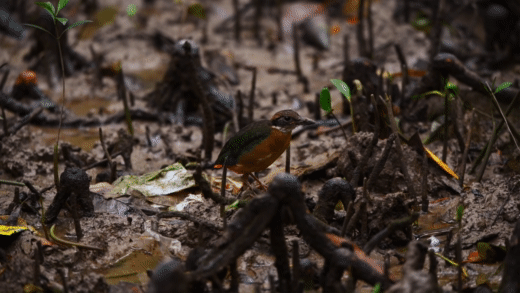 Mangrove pitta looking cute. Footage via JD Wild Productions/Facebook.
Mangrove pitta looking cute. Footage via JD Wild Productions/Facebook.
From far, this bird is easy to miss when you're walking around the mangrove. However, with a zoom lens, you can see the vibrant streaks of colour on this bird.
This bird is a rare resident in Singapore that prefers mangrove environments.
This means that mangrove destruction could have negative consequences on this species.
Smooth-coated otters
At Pasir Ris Park, you get to see some otters too.
This scene of Smooth-coated Otters eating fresh fish they've hunted will make you wish you had some wild-caught sashimi too:
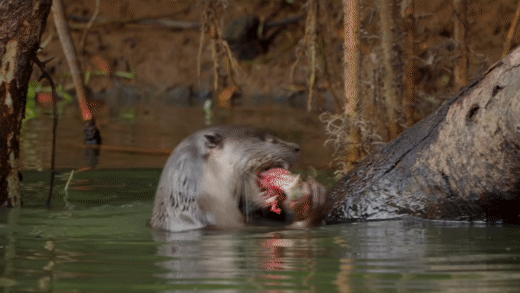 Local favourites (Smooth-coated otters) eating wild sashimi. Footage via JD Wild Productions/Facebook.
Local favourites (Smooth-coated otters) eating wild sashimi. Footage via JD Wild Productions/Facebook.
These creatures were once not seen in Singapore when Singapore's river and canals were polluted in the 1960s, and managed to re-establish their local populations in 1990s.
Thus, the species is a testament to how and why clean waters and environments can help facilitate the increase in different wild populations of flora and fauna.
Globally, these smooth-coated otters are listed as "Vulnerable" on the International Union for Conservation of Nature Red List.
Took 3 months to film and edit
Capturing such a diverse range of wildlife and sights (including both rain and shine) is definitely not an easy feat.
Jayaprakash told Mothership that he met Dan in September 2020 and the duo spent three months filming and editing the 11-minute video.
Jayaprakash is no stranger to the world of nature photography, and was awarded National Geographic Photographer of the Year in 2017.
Last year, Jayaprakash amazed nature lovers online with his stunning shot of a reticulated python at Pasir Ris Park.
The photographer shared with us that both Dan and he went to Pasir Ris Park "almost every day", or at least six days a week for three months.
He said that either one of them would be in the park to film if the other was busy, as this allowed for the photographers to capture these animals in their natural habitat.
Patience is key
The photographer shared with Mothership that the longest amount of time they took to capture a single scene was four hours.
When asked about how the duo cultivated patience to become nature photographers, Jayaprakash responded that patience and knowledge are key:
"We both have a passion and interest for wildlife and nature and that really gives us the patience and motivation to capture them in their natural wild state.
Loads of patience and knowledge of wildlife through observation is the key to becoming a successful nature photographer or a videographer.
Unlike other forms or style of photography there are no actors and pretty much nothing is in your control."
When asked what's next for the duo, Jayaprakash shared with Mothership that they will be following up with this series of videos and will be doing an overall coverage of local wildlife in Singapore.
Stay tuned.
You can watch the entirety of the Nat Geo-like footage here:
Related stories:
Photos via JD Wild Productions/Facebook.
If you like what you read, follow us on Facebook, Instagram, Twitter and Telegram to get the latest updates.

